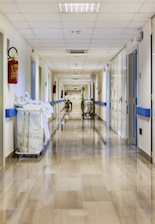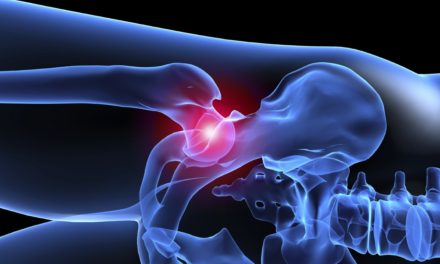With the industry’s focus on value-based care, musculoskeletal service line leaders responsible for transforming processes and programs must be responsive both to payment reform and to the increasing expectations of healthcare consumers for ease and convenience. Everyone’s sights are set on delivering better outcomes, greater patient satisfaction, and lower costs.
The 2018 Musculoskeletal Leadership Summit brings orthopedic and spine thought leaders together to share best practices and lessons learned, presenting a unique opportunity to provide orthopedic and spine program excellence without the need to reinvent the wheel.
In Part Five of our series, we spoke with Stephanie Kelly, Executive Director, Connecticut Joint Replacement Institute and Spine Institute of Connecticut at Saint Francis Hospital and Medical Center, about her top strategies for patient-centered care. 
Tell us about your background in nursing and your role as executive director. How have the shift to value-based care and the increasing expectations of healthcare consumers influenced the work that you do?
As a nurse leader for close to 20 years, I have been involved in orthopedics specifically with the Connecticut Joint Replacement Institute (CJRI) since 2008. My focus with CJRI has been on program development and creating value-based healthcare. This is a journey that continues to evolve as the landscape of healthcare and orthopedics changes. The key to our success has been the partnership and alignment of our private practice physicians, hospital executives and nursing leaders. Three years ago, we created a similar spine program adhering to these same concepts.
Our journey to value-based healthcare started shortly after CJRI was established. Our leadership team identified the need to develop protocols that standardized care for the patient having joint replacement surgery. Then, we measured the response to those protocols. We have a dedicated research and quality team that collects, reviews, and adjudicates this data. This process is unique to many places and paramount to our program. It was extremely important to us that the data we shared with our surgeons was clean and trustworthy. This trust has allowed us to be transparent with our data and our surgeons to work collaboratively to reduce cost and improve care.
As patients become more proactive about choosing where to have joint replacement surgery, CJRI stands out at both a local and national level as both a quality and lower cost program. We hear this often from our patients.
As you know, the 2018 Musculoskeletal Leadership Summit presents an opportunity for service line leaders to connect and participate with surgeons, nurses, and other clinicians. Why is this type of collaboration important for clinical transformation?
Exposure to regional and national programs is crucial to those seeking to build specialized programs. A smaller venue like this allows for more back and forth discussion on ideas and the struggles that each speaker or participant faces.
When CJRI was first established, we did not have the luxury of connecting with many programs or peers that were doing something similar. Everything took much longer and we learned by trial and error. Many places eager to create a Center of Excellence can advance much more quickly when the key stakeholders are all aligned with the same mission and values.
Can you tell us a bit about your speaking topic, “Outpatient Joint Surgery Is Coming… Are You Prepared”? Why is this topic important to you personally?
The Connecticut Joint Replacement Institute was established in 2007 and our average length of stay (LOS) was between three to four days. At that time, no one had envisioned a future shift to outpatient surgery. In fact, the inpatient space outgrew our needs when our LOS dropped to one to two days. Compared to other parts of the region, our area was slow to embrace this concept. We have a really great program – patients are happy and surgeons are happy with the security of an overnight stay. There was no rush to change this and we took advantage of that time to assure we created a program that met the same high standards of the original program.
Outpatient surgery is here. Patients, payors, the government, and employers are asking for this. More and more, with advances to our care, we see patients that “could have” gone home the day of surgery, yet stayed the night.
Our goal was to create an experience that did not jeopardize patient quality, safety, or experience. And after a two and a half year journey towards outpatient surgery, our entire team feels confident in the program we developed. We are still in the infancy phase, but we have not seen any adverse outcomes to our patient population that is discharged the same day.
Can you share some examples of the work you’ve done to improve experience, outcomes, and value through the Connecticut Joint Replacement Institute at Saint Francis?
The most meaningful changes we made to enhance the progression and outcomes of outpatient joint surgery has been related to hydration and ambulation.
Our mobility program was developed in January 2015. Historically all mobility was managed by physical therapy. We noticed a significant amount of patients were not ambulated day of surgery. After evaluating several options, our leadership team decided to transition this responsibility to nursing. Much of our staff was reluctant to get patients out of bed for their first ambulation after joint surgery. We partnered with PT and created a formal education program that includes a nursing egress test. Nursing staff are now the leaders in mobilizing patients with a PT consult post-op day one before discharge or in PACU for outpatients.
Hydration and education for patients about hydrating well before surgery has had a big impact on reducing dizziness, syncope and nausea/vomiting. Patients are now instructed to drink clear fluids the morning of surgery until the time they leave their home.
What about the Summit are you most looking forward to?
I’m really looking forward to meeting with the speakers and participants to see what they have learned with their specific programs. More than ever, there are many great programs that have been developed, all value-based but with different approaches. It is so important to keep your mind open and willing to change but most importantly not having to recreate or start from scratch.
I am also interested in hearing the trials and tribulations of the bundled payment journey. CJRI has had seven bundle packages for over seven years. Just this year, we’re finally making some progressive movement with bundled payments. Recently, we added two spine bundles to our portfolio. Creating more will be a big focus this year with increased interest in spine care.
Join Stephanie Kelly and other thought leaders at the Musculoskeletal Leadership Summit, April 26-27, 2018 in Chicago, sponsored by Wellbe and Kermit.







